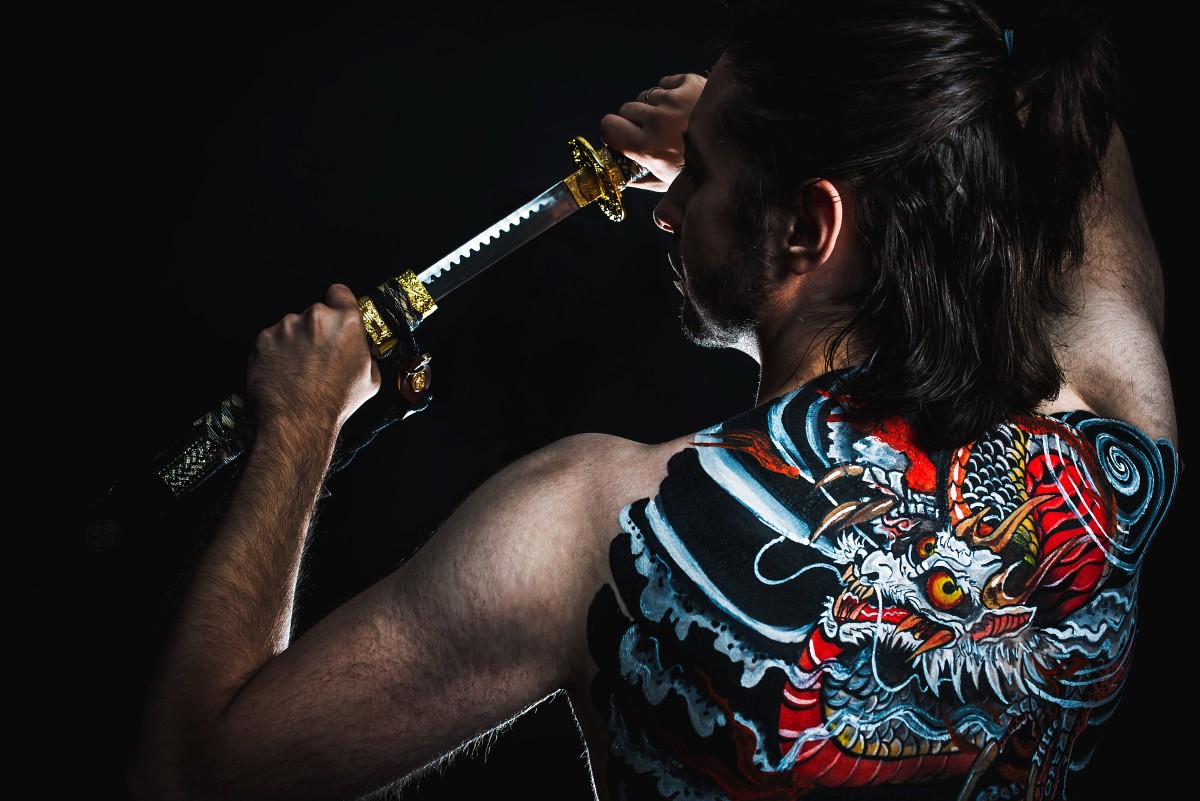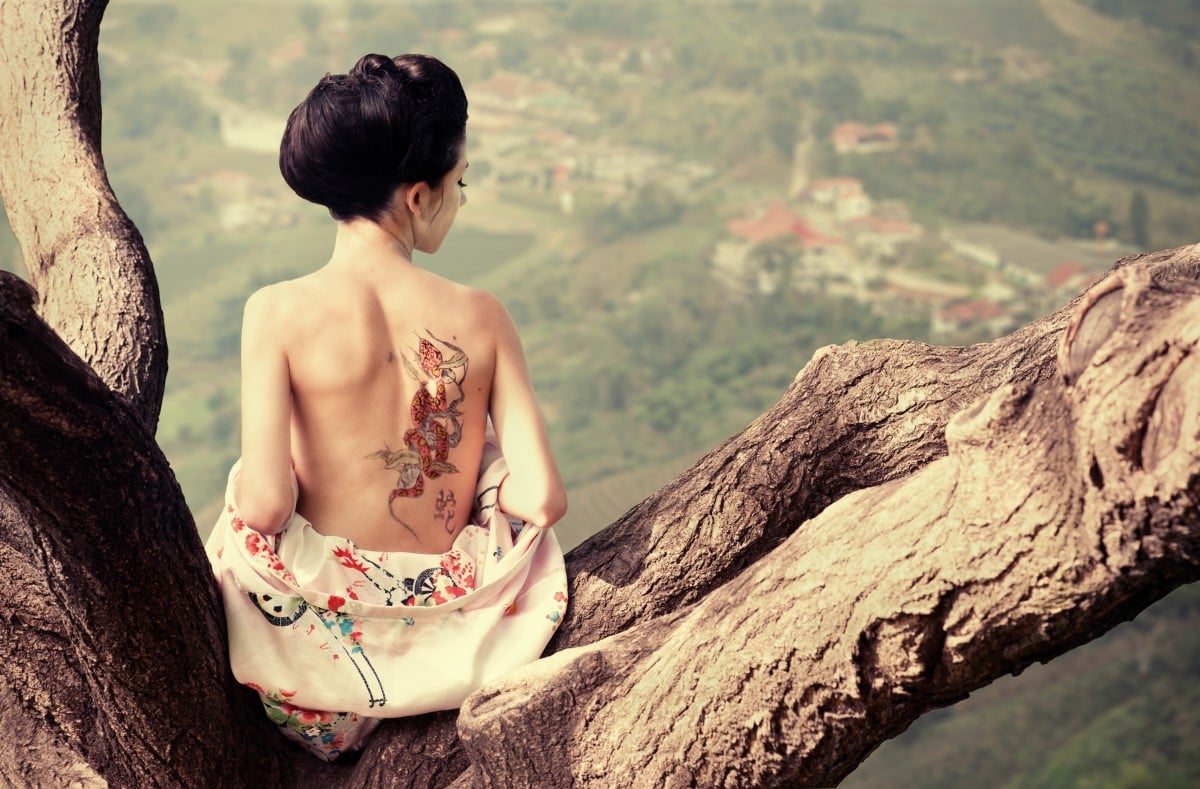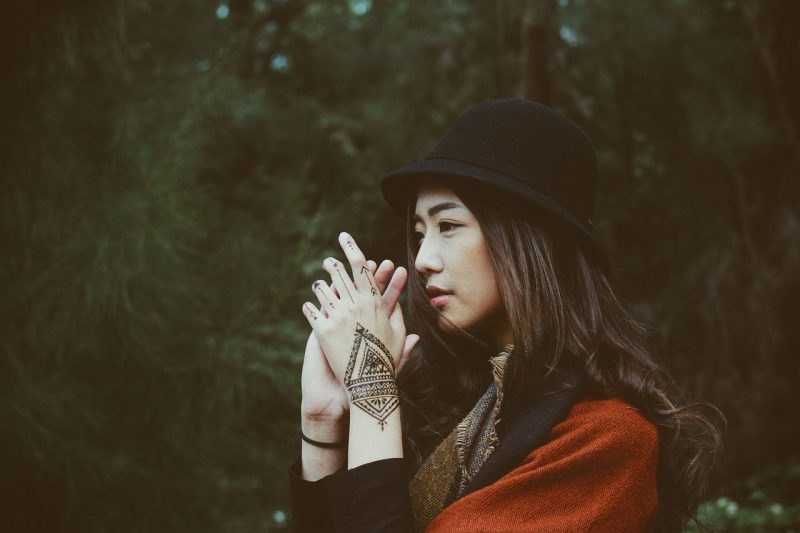Japanese tattoos, known as irezumi, carry deep meanings and are filled with symbolism. The choice of a character or graphic element goes beyond aesthetics: these tattoos often reflect personal beliefs, virtues, spiritual protection, and even the identity of the wearer. Traditionally, tattoos were associated with warriors and outcasts, but today they are increasingly popular and seen as a form of art and expression.
With roots dating back thousands of years, the tradition of Japanese tattoos has evolved significantly. While some people choose kanjis (ideograms) to convey powerful messages, others opt for traditional designs like dragons, cherry blossoms, and koi fish. Each symbol has a story and a purpose, making the tattoo much more than just an image on the body.

Table of Content
The History and Tradition of Japanese Tattoos
The history of tattoos in Japan is long and marked by changes in meaning over the centuries. During the Edo period (1603-1868), tattoos were used as punishment, identifying criminals with visible marks on their bodies. However, over time, irezumi gained a new connotation, being adopted by warriors and common people as a symbol of strength and protection.
With the development of traditional art, the Japanese style has solidified as a form of respect for cultural values. Elements such as the dragon and the phoenix have been incorporated to represent protection, transformation, and wisdom. Even so, to this day, some stigmas remain, especially among older generations, who associate tattoos with the yakuza, the Japanese mafia.
Nowadays, prejudices are diminishing, and both Japanese and foreigners adopt Japanese symbols and characters in their tattoos. Tattoo studios in Japan and abroad offer various styles, from traditional irezumi to modern adaptations of kanjis.

The Meaning of Kanjis in Tattoos
Many people choose kanjis for their simplicity and depth of meaning. Each ideogram can hold multiple meanings and convey complex concepts with just one word. Below are some of the most popular kanjis in tattoos:
- 愛 (ai): Love
- Power (力 - chikara): Force
- 忍 (nin)Perseverance
- 夢 (yume): Dream
- 平和 (heiwa): Peace
Choosing a kanji requires careful consideration, as the meaning can change depending on the context. Additionally, it's important to ensure that the writing and stroke are correct, since small mistakes can distort the message or leave the tattoo meaningless.
Often, kanjis are combined to create a short phrase or a personalized message, enhancing the emotional impact of the tattoo. This type of tattoo stands out for its minimalist and profound aspect, being a frequent choice among those seeking discreet symbolism.

Traditional Symbols and Their Meaning
In addition to kanjis, many choose traditional Japanese designs for their tattoos. These visual elements bring not only beauty but also profound meanings:
Dragon (龍 – Ryū)
Japanese dragons represent power, wisdom, and protection. Unlike Western dragons, seen as destructive beings, Japanese dragons are benevolent and often associated with water and rain.
2. Koi Fish (鯉 – Koi)
The koi fish is a symbol of overcoming and perseverance, inspired by the legend that carp swimming against the current transform into dragons. This tattoo is common among people who have faced great challenges in life.
3. Sakura (桜 – Cherry Blossom)
Cherry blossoms symbolize the impermanence and the ephemeral beauty of life. It is a popular choice among those who wish to express the appreciation of the present and the acceptance of change.
These symbols are often tattooed on large areas of the body, such as the back or arms, to create rich and detailed artistic compositions, following the traditional irezumi style.

The Choice of the Tattoo: Art and Personal Meaning
Choosing a tattoo in Japanese is a decision that involves more than just aesthetics. The depth of meanings and the connection to millennia-old traditions make this choice a powerful way to express feelings, values, and experiences. Many people who seek these tattoos do so to commemorate important moments or to overcome personal challenges.
However, it is essential to research well before choosing a symbol or kanji, especially for those who are not familiar with the Japanese language. An incorrect translation or a misunderstood symbol can lead to embarrassing situations. Consulting experienced tattoo artists and, if possible, native Japanese speakers is a good practice.
Wrapping Up
Japanese tattoos offer a unique form of expression, combining aesthetics, symbolism, and tradition. Whether they are kanjis or traditional designs, these tattoos have the power to communicate deep and personal messages. However, it is essential to choose carefully, ensuring that the tattoo correctly reflects what one wishes to convey.
With the popularization of this art, the ancient stigma surrounding tattoos in Japan is disappearing, and more and more people are embracing this millennia-old tradition to tell their own stories through their skin.
